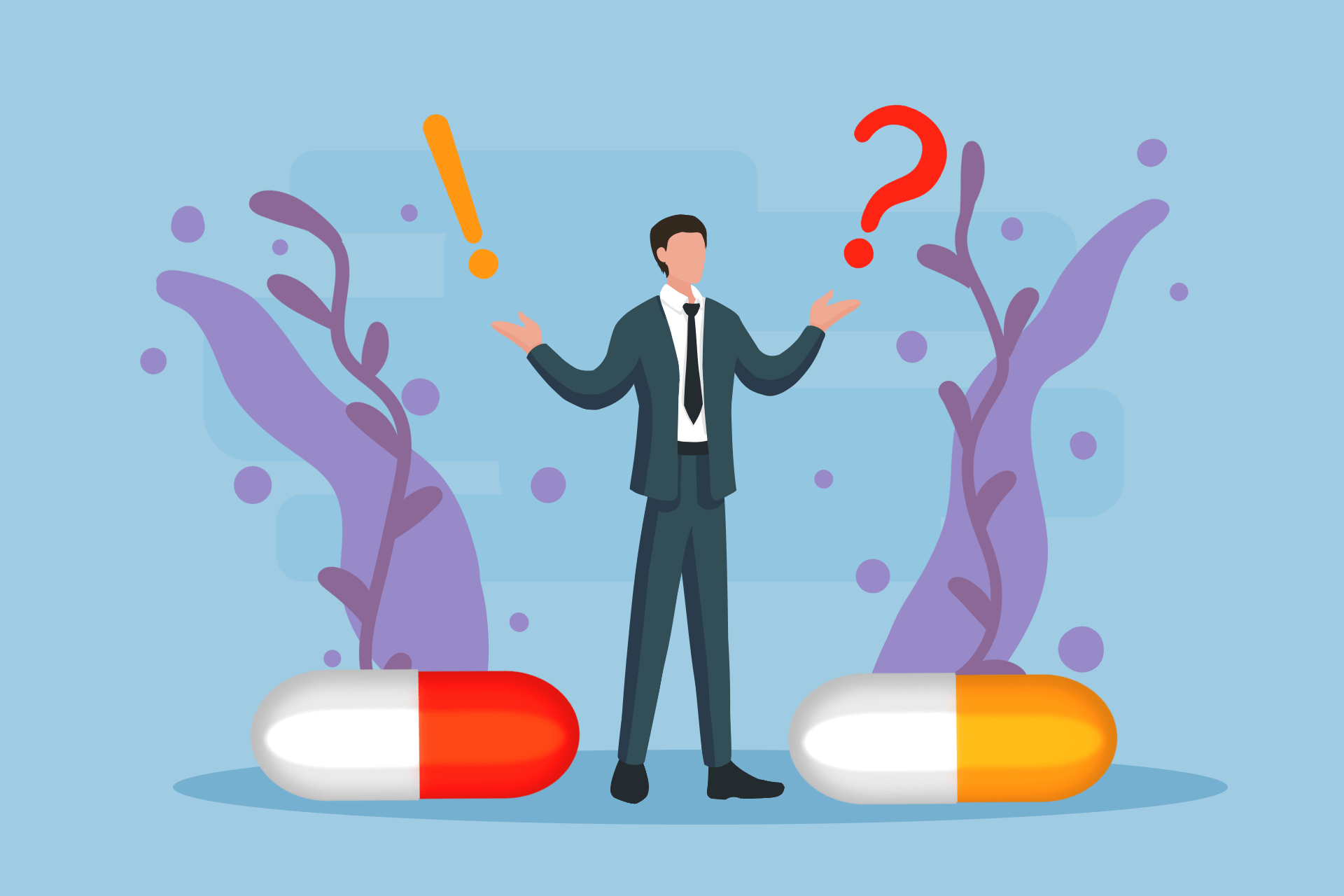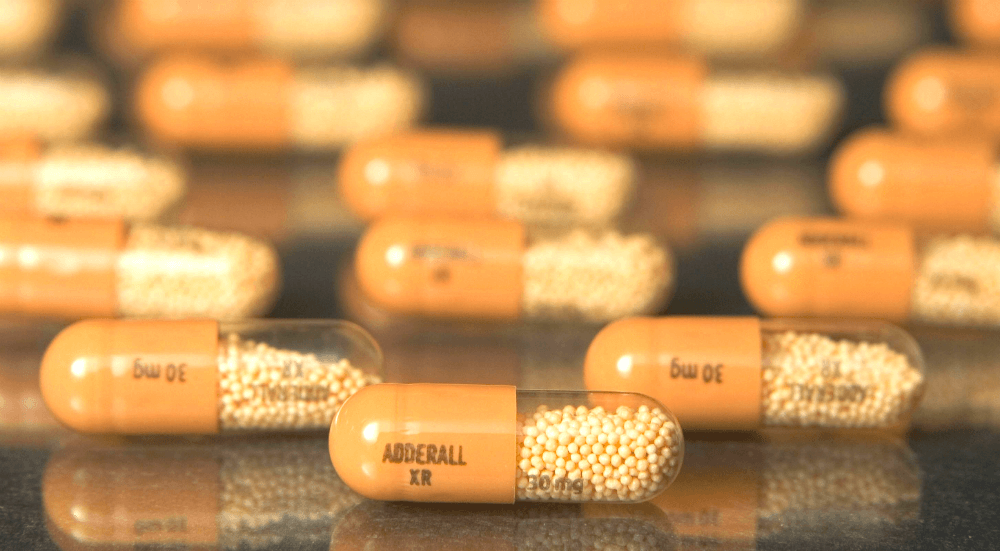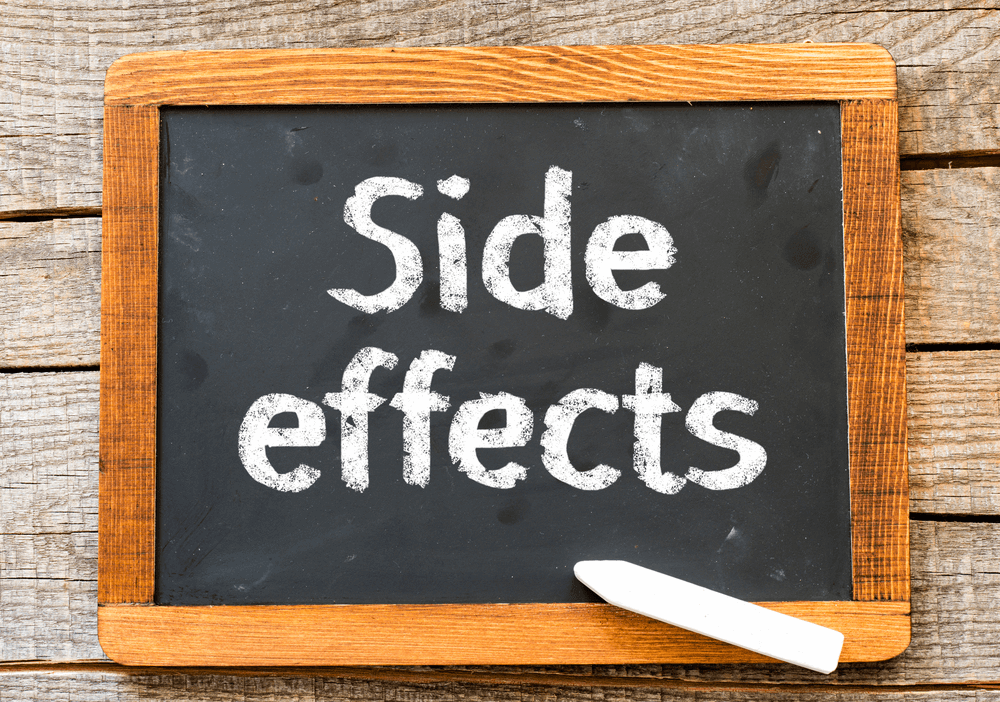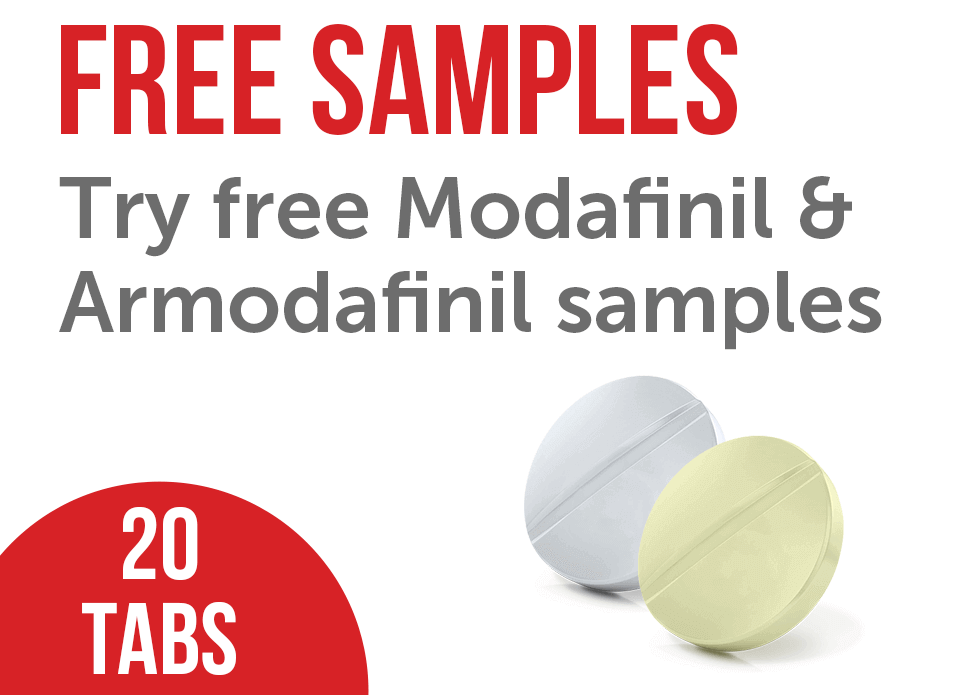Vyvanse and Adderall are commonly prescribed meds used to treat attention deficit hyperactivity disorder (ADHD) & can be prescribed to therapy narcolepsy. Both belong to a class of meds known as central nervous system (CNS) stimulants. While each drug has its distinct features, questions often arise about the safety, potential benefits, as well as risks of mixing Vyvanse and Adderall. Now, is it safe to mix?
This guide aims to shed light on these aspects, exploring their primary features, dissimilarities, safety considerations, probable benefits, dosage guidelines, conceivable negative effects, and ways to mitigate adverse effects when taking these meds together. Let’s dive in.
Main Features of Vyvanse
Vyvanse, a drug containing lisdexamfetamine dimesylate, is a CNS stimulant that impacts brain chemicals and nerves governing hyperactivity and impulse control. Once ingested, enzymes in the body convert lisdexamfetamine into dextroamphetamine, a CNS stimulant. This conversion process occurs primarily in red blood cells and the liver, which contributes to Vyvanse’s extended-release effects.
The med is developed and manufactured by Shire Pharmaceuticals (now part of Takeda Pharmaceuticals). The U.S. Food and Drug Administration (FDA) approved Vyvanse in 2007 for individuals aged 6 and above to effectively address ADHD in both adults and children. In addition to ADHD, Vyvanse is also approved for the treatment of moderate to severe binge eating disorder (BED) in adults [1]. It can help reduce the number of binge eating days per week. It’s essential to note that Vyvanse isn’t intended for use in cases of obesity or as a weight-loss med.
You may ask, what is its mode of action? Vyvanse works by increasing the levels of certain neurotransmitters in the brain, particularly dopamine and norepinephrine. These neurotransmitters play crucial roles in regulating attention, impulse control, and motivation. By enhancing the activity of these neurotransmitters, Vyvanse helps improve concentration, attention, and behavioral control in individuals with ADHD.
Basic About Adderall
Adderall, a medication manufactured by various pharmaceutical companies, including Shire Pharmaceuticals, Teva Pharmaceuticals, Barr Pharmaceuticals, and Mylan Pharmaceuticals, originated from Richwood Pharmaceuticals, which was later acquired by Shire. Adderall consists of a combination of amphetamine salts, including dextroamphetamine saccharate, dextroamphetamine sulfate, amphetamine aspartate monohydrate, and amphetamine sulfate as its active ingredients.
Approved by the FDA, Adderall serves multiple purposes in the medical field. It’s primarily indicated for the treatment of ADHD in both children (above 3 years old) and adults. By modulating certain neurotransmitters in the brain, Adderall aids in managing the hallmark symptoms of ADHD, including inattention, hyperactivity, and impulsivity. Furthermore, it holds FDA approval for addressing narcolepsy, a chronic sleep disorder characterized by excessive daytime sleepiness and sudden attacks of sleep [2].
Apart from its FDA-approved uses, healthcare providers occasionally prescribe Adderall for off-label purposes. These off-label uses encompass its utilization in certain cases of depression that do not respond sufficiently to other treatments. However, this off-label use remains limited due to concerns about potential abuse and addiction risks. Additionally, some individuals may resort to using Adderall off-label as a cognitive enhancer or “study drug” to augment focus, attention, and productivity, particularly among students or professionals requiring heightened concentration over extended periods [3]. Nevertheless, this off-label practice lacks medical endorsement and is associated with significant risks.
Difference Between Vyvanse and Adderall
You may be wondering what’s the difference between Vyvanse and Adderall. Indeed, while both Vyvanse and Adderall fall under the category of CNS stimulants and share similar therapeutic goals, they differ significantly in their chemical composition, formulations, onset of action, and duration of effects [4].
Vyvanse, containing lisdexamfetamine as its active ingredient, stands out due to its prodrug nature. Lisdexamfetamine remains inactive until metabolized within the body, where enzymes convert it into dextroamphetamine, the active stimulant component. This unique metabolic process results in a delayed onset of action compared to Adderall. Vyvanse is formulated as an extended-release capsule, providing a more gradual and sustained effect over a time of approximately 10 to 14 hours per dose.
In contrast, Adderall comprises a combination of mixed amphetamine salts, primarily consisting of dextroamphetamine and levoamphetamine. The dextroamphetamine component is responsible for its stimulant effects. Adderall is available in both immediate-release (IR) and extended-release (XR) formulations. Differences exist between the durations of effectiveness for Vyvanse and Adderall meds, which can significantly influence their suitability in managing symptoms for individuals. The immediate-release variant of Adderall typically has a duration of around 3-4 hours per dose, allowing for the possibility of taking it two to three times on the same day. On the other hand, the extended-release form is taken once a day but provides an extended period of effectiveness. It also stays in your system active between 10 and 12 hours. In comparison, a single dose of Vyvanse can remain effective for up to 14 hours, making it a feasible option for a morning dose that sustains throughout the day.
Another notable difference lies in their metabolism and onset of action. Vyvanse, requiring enzymatic conversion in the body, has a slower onset of action compared to the immediate-release form of Adderall. As Vyvanse is metabolized into dextroamphetamine, its effects gradually manifest, leading to a smoother and sustained impact. Adderall, especially the immediate-release formulation, is known for its relatively faster onset of action due to quicker absorption into the bloodstream. Adderall typically begins to exhibit its effects in about half an hour, whereas Vyvanse generally takes around 1-2 hours to show its effects.
Vyvanse’s prodrug nature might be preferred for individuals concerned about the potential for abuse, while Adderall, especially its immediate-release form, might be suitable for those requiring a quicker onset of action or flexibility in dosing.
As a note, Vyvanse and Adderall are indeed legal, but they belong to Schedule II drugs, indicating their potential for abuse and dependency. Both meds are designed for oral consumption. Vyvanse requires conversion within the body and can’t be inhaled or injected for recreational purposes, making it less prone to misuse compared to Adderall and other stimulants.
Adderall IR comes in tab forms ranging from 5 to 30 mg, while Adderall XR is available in six different doses between 5 mg and 40 mg. Vyvanse is offered in capsules and chewable tablets across various strengths, ranging from 10 mg to 70 mg. The dosage strength is determined based on factors such as age, weight, and individual response to the medication. It’s usually taken once daily in the morning, with or without food.
Is It Safe to Take Vyvanse & Adderall Together?
Although there’s no interaction, taking Vyvanse and Adderall together is typically not recommended due to various reasons associated with their similar mechanisms of action, potential adverse effects, and insufficient evidence supporting their combined use. Vyvanse is different from Adderall, but active ingredient-wise, they’re pretty similar. For instance, 20 mg of Vyvanse is approx. equivalent dose of Adderall 10 mg. Vyvanse acts as a prodrug of dextroamphetamine, metabolizing in the blood into this active form. On the other hand, Adderall comprises dextroamphetamine (75%) and its isomer mirror, levoamphetamine (25%) [5].
Because Vyvanse has a lysine molecule attached to serve as a prodrug, its molar weight is about double that of dextroamphetamine. Thus, when 20 mg of Vyvanse converts into dextroamphetamine, it equates to roughly 10 mg of the active ingredient. Comparatively, 20 mg of Adderall consists of approx. 15 mg dextroamphetamine and 5 mg levoamphetamine. Combining 20 mg of Adderall with 20 mg of Vyvanse results in around 25 mg of dextroamphetamine and 5 mg of levoamphetamine, still less than a 40 mg Adderall XR dose.
However, despite these details, co-administering Vyvanse and Adderall raises concerns about heightened risks of adverse effects due to their overlapping mechanisms and combined stimulant effects. There’s limited clinical evidence supporting the safety or significant therapeutic advantages of taking these medications together compared to using either drug alone [6].
While a dosage of 20 mg Adderall and 20 mg Vyvanse may not be considered inherently dangerous, it’s crucial to approach such combinations cautiously and under the guidance of a physician. It’s also worth noting that individual responses to these meds can vary, and what works well for one person may not yield the same results for another. Some individuals prefer Vyvanse for its perceived reduction in “adrenaline-like” effects and more focused sensation.
Are There Any Benefits to Mixing Vyvanse and Adderall?
While some individuals might express personal experiences or anecdotes suggesting a perceived benefit from combining these meds, it’s important to emphasize that individual responses to meds can vary significantly. Nonetheless, medical decisions should be guided by evidence-based practice rather than anecdotal experiences, and the risks associated with mixing Vyvanse and Adderall outweigh any potential unproven benefits. It’s crucial to consult with a qualified physician for guidance and explore alternative strategies for managing ADHD or narcolepsy that prioritize safety and efficacy.
Certainly, lower doses of these meds may still provide therapeutic benefits for managing ADHD or narcolepsy while minimizing the risk of adverse effects.
Dosage of These Drugs When Taken Together
When considering the concurrent use of Vyvanse and Adderall, the cautious approach involves discussing lower doses of both meds with a physician. As explained earlier in this guide, lower doses, carefully examined and prescribed by a doctor, aim to strike a balance between safety and effectiveness. Opting for immediate-release formulations of Adderall and Vyvanse, if deemed appropriate by a physician, may offer more control over the dosing regimen.
Collaborating with a doctor to explore lower doses ensures a safer approach while potentially reaping therapeutic benefits. The immediate-release version of Adderall plus Vyvanse provides flexibility in managing dosage, allowing for better monitoring of their effects and minimizing the risk of adverse reactions. However, any adjustments to dosages or combining medications should only occur under the guidance and supervision of a qualified healthcare provider to ensure the safest and most effective treatment plan for ADHD or narcolepsy.
Now, can you take Vyvanse or Adderall XR in the afternoon? Certainly, Vyvanse is administered as a once-daily oral med in the morning. The peak effects of dextroamphetamine from either the capsule or tab formulation are attained in about 3.5 to 4.5 hours. Avoid afternoon or evening doses because they can interfere with sleep, not unless you are doing night shift work. Also, take Adderall XR in the morning. Avoid popping it in the afternoon because of the potential for insomnia.
Possible Side Effects
While they can effectively manage ADHD symptoms, they also carry their own set of side effects. Combining these two drugs can heighten the risk of experiencing these side effects and may even lead to new adverse reactions. The potential side effects that might occur when using both meds together include the following [4][6]:
- increased heart rate and elevated risk of tachycardia, stressing the heart;
- heightened blood pressure, especially risky for individuals with hypertension;
- overstimulation causing anxiety or restlessness similar to excessive caffeine;
- sleep disturbances like severe insomnia or disrupted sleep patterns;
- digestive issues such as loss of appetite, nausea, and upset stomach;
- mood changes like irritability, mood swings, or depressive episodes;
- increased potential for addiction or substance use disorder;
- aggravation of mental health issues like bipolar disorder;
- higher risk of severe cardiovascular events like stroke or heart attack;
- pronounced neurological symptoms like headaches, tremors, and dizziness.
These negative effects might not be limited to the mentioned ones. Individual reactions can vary based on physiology, other meds taken, underlying health conditions, and lifestyle factors.
The side effects of one drug might intensify those of the other, leading to increased discomfort or risk. Further, dosage plays a crucial role. Lower doses may result in milder negative effects, while higher doses can lead to more severe outcomes. Combining them can also alter the duration of each drug’s effects, causing unpredictable fluctuations in symptom relief and negative effects. Combining meds without guidance is unwise. While the idea of increased benefits might be tempting, the risks associated with mixing should be approached cautiously.
Furthermore, you might experience erectile dysfunction (ED) while using amphetamines [7]. If you have certain health conditions, avoid Vyvanse or Adderall since they cause interactions. These conditions include:
- bipolar disorder;
- glaucoma;
- cardiovascular disease;
- high blood pressure;
- liver problems;
- hyperthyroidism.
Both Adderall and Vyvanse are considered unsafe during pregnancy and aren’t recommended while breastfeeding. Given that both meds are amphetamines with addictive potential, if you have a history of substance abuse, refrain from using them.
Further, the risk is also greater when you pop these meds with alcohol. Adderall can certainly mask the effect of alcohol, making you more likely to drink more, which can contribute to alcohol poisoning & injuries from alcohol use, such as falls. Booze can also heighten the side effects of these meds.
What’s more? Both Adderall and Vyvanse are commonly detectable in urine tests used for drug screening. Adderall test can typically be detected for around 1-3 days after the last dose, with extended-release versions potentially detectable for slightly longer. Vyvanse may have a similar detection window of approximately 1-3 days after the last dose. Nonetheless, individual factors such as dosage, metabolism, and test sensitivity can influence detection times.
How to Reduce Side Effects of Vyvanse and Adderall?
Reducing the side effects of Vyvanse and Adderall requires a multifaceted approach guided by a physician. First, strict adherence to the prescribed dosage is crucial. Altering the dosage without consulting a physician can heighten side effects or reduce the med’s effectiveness. Open communication with your doctor regarding any experienced side effects is essential. This ongoing dialogue helps monitor your response to the medication and enables adjustments or recommendations.
Maintaining proper hydration and a well-balanced diet is vital. Dehydration can exacerbate certain side effects, while a balanced diet may help alleviate gastrointestinal issues. Ensuring sufficient and quality sleep is also important. These stimulant meds can interfere with sleep patterns, so establishing a consistent sleep routine and discussing any disturbances with your healthcare provider is advisable.
Additionally, minimizing or avoiding other stimulants, such as caffeine, while taking Vyvanse or Adderall is recommended. Combining stimulants can intensify negative effects. Regular health check-ups can monitor potential negative effects that may not be immediately noticeable, such as changes in blood pressure, heart rate, or weight.
Further, implementing behavioral strategies, such as mindfulness, stress reduction exercises, & relaxation techniques, may help manage certain negative effects like irritability, anxiety, or mood swings. Adhering to the prescribed timing and administration of meds is also crucial in managing negative effects. Discussing potential supplements or specific foods with your physician may provide relief for certain side effects, but it’s essential to seek their guidance before starting any new supplements.
Regular follow-up appointments with your physician are highly recommended. These appointments evaluate the medication’s efficacy and assess any ongoing or new side effects.
Vyvanse with Adderall: Is It Worth the Risk?
The decision to use Vyvanse or Adderall, either alone or together, demands careful consideration and open discussions with a physician. It’s critical to follow the guidance provided by a healthcare professional when contemplating the combination of these medications. This cautious approach is essential to minimize potential risks and guarantee the safest and most effective treatment for conditions like ADHD or narcolepsy.
Furthermore, both Vyvanse and Adderall exhibit similar effectiveness in managing ADHD symptoms; choosing between them is often a matter of personal preference. While both medications can effectively address symptoms, pinpointing the most suitable medication and dosage may involve some trial and error.
However, it’s crucial not to mix these drugs casually based on anecdotal reports suggesting potential benefits. Relying solely on one medication that you believe can deliver the desired results under the guidance of a healthcare provider is the prudent course of action. Prioritize safety and adhere strictly to medical advice rather than experimenting with combinations that may pose unforeseen risks to your health.
References
- Highlights Of Prescribing Information (pdf). Retrieved: December 3, 2023. Accessdata.fda.gov.
- All About Adderall. By Helen Marshal. Published: April 17, 2023. Medically reviewed by Rosanna Sutherby. Healthline.com.
- The Use and Impact of Cognitive Enhancers among University Students: A Systematic Review. By Safia Sharif, Amira Guirguis, Suzanne Fergus, and Fabrizio Schifano. Published: March 10, 2021. Ncbi.nlm.nih.gov.
- Vyvanse vs. Adderall: Similarities and Differences. By Jacqueline Sinfield. Retrieved: December 3, 2023. Medically reviewed by John C. Umhau. Verywellmind.com.
- What is the difference between Adderall and Dextroamphetamine? Retrieved: December 3, 2023. Drugs.com.
- Vyvanse and Adderall Together. Published: April 19, 2022. Ijest.org.
- Adderall Side Effects in Men. By Jacqueline Sinfield. Medically reviewed by Steven Gans. Retrieved: December 3, 2023. Verywellmind.com.










